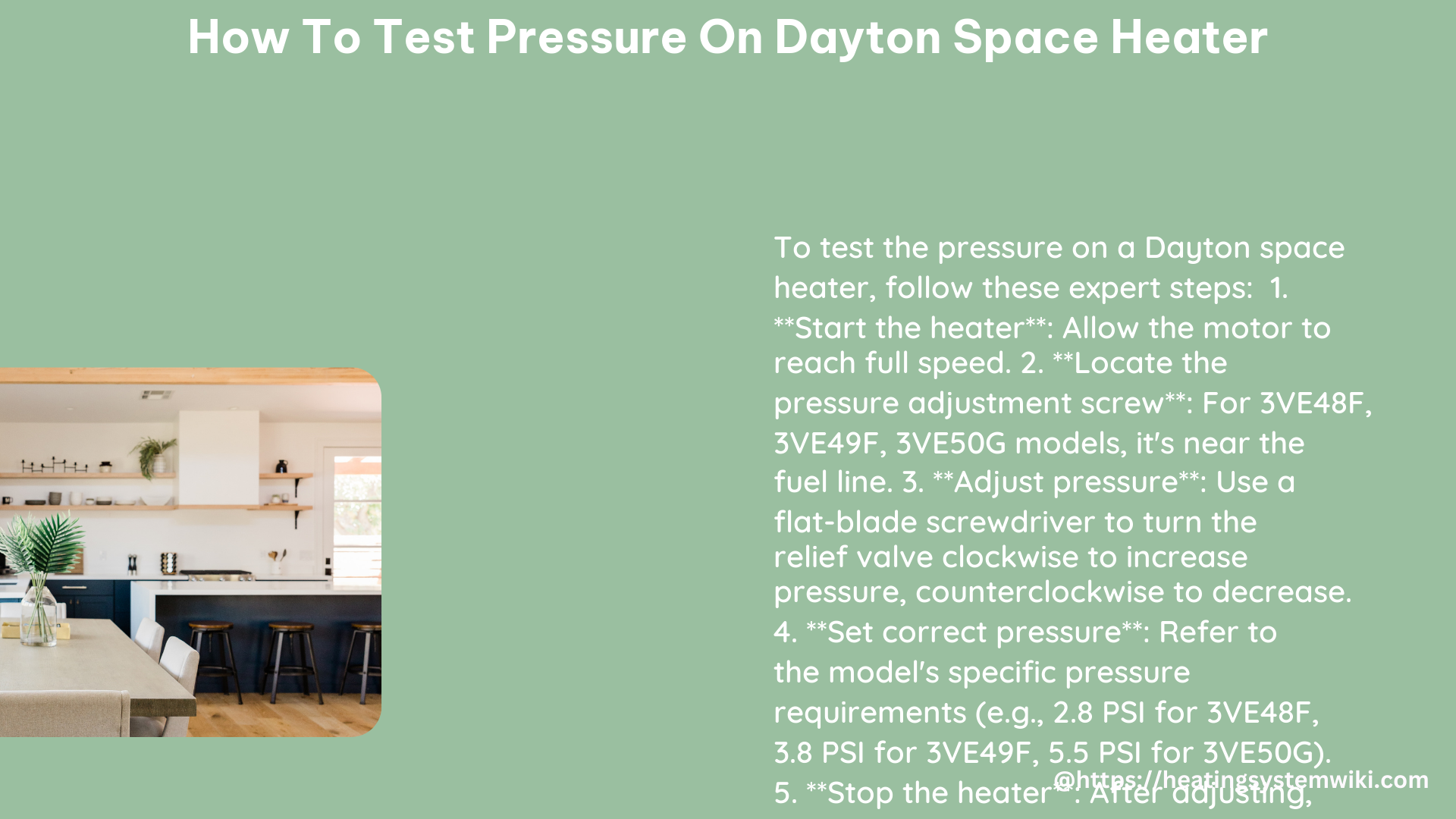Ensuring the proper pressure in a Dayton space heater is crucial for its safe and efficient operation. This comprehensive guide will walk you through the step-by-step process of testing the pressure on your Dayton space heater, providing you with the technical details and expert insights needed to diagnose and address any pressure-related issues.
Locating the Pressure Tap
The first step in testing the pressure on your Dayton space heater is to locate the pressure tap. This is typically a small, threaded port on the side or bottom of the heater, often labeled as “Pressure Tap” or “Manometer Connection.” Consult your heater’s user manual or look for a label on the unit to identify the exact location of the pressure tap.
Connecting the Manometer

Once you’ve located the pressure tap, you’ll need to connect a manometer, which is a device used to measure the pressure difference between two points. When selecting a manometer, choose one that is compatible with the pressure range specified for your Dayton space heater, typically ranging from 0 to 35 inches of water column (in. w.c.).
To connect the manometer, follow these steps:
- Ensure the manometer is properly calibrated and functioning correctly.
- Attach a flexible hose or tubing to the manometer’s input port.
- Securely connect the other end of the hose or tubing to the pressure tap on the Dayton space heater.
- Make sure the connection is tight and there are no air leaks, as this can affect the accuracy of the pressure reading.
Observing the Pressure Reading
With the manometer connected, turn on the Dayton space heater and observe the pressure reading. The pressure should be within the recommended range specified in the heater’s technical specifications, typically between 3.5 and 14 in. w.c. for natural gas-fired models and 8 to 13 in. w.c. for propane-fired models.
If the pressure reading is outside the recommended range, you may need to adjust the pressure regulator or contact a qualified professional for further assistance. Attempting to adjust the pressure regulator without proper training and equipment can be dangerous and may result in further damage to the heater.
Troubleshooting Pressure Issues
If the pressure reading is too high or too low, consider the following troubleshooting steps:
- Pressure Too High: Check the pressure regulator for proper adjustment. If the regulator is malfunctioning, it may need to be replaced. Ensure the gas supply line is not obstructed or restricted.
- Pressure Too Low: Verify the gas supply line is properly sized and not experiencing any leaks or restrictions. Check the pressure regulator for proper adjustment or replacement if necessary.
In some cases, the issue may be related to other components of the Dayton space heater, such as the gas valve, thermostat, or blower motor. If you are unable to resolve the pressure issue, it is recommended to consult a qualified HVAC technician for further diagnosis and repair.
Safety Considerations
Testing the pressure on a Dayton space heater should only be performed by individuals with the proper training and equipment. Attempting to test or adjust the pressure without the necessary expertise can be extremely dangerous and may result in serious injury or property damage.
Always refer to the manufacturer’s instructions and safety guidelines when working on your Dayton space heater. If you are not comfortable performing this task, it is best to contact a licensed HVAC professional for assistance.
Conclusion
Maintaining the proper pressure in your Dayton space heater is essential for its safe and efficient operation. By following the steps outlined in this guide, you can accurately test the pressure and identify any issues that may require attention. Remember to always prioritize safety and consult a qualified professional if you have any doubts or concerns about the process.
References:
- How to Fix a Space Heater – YouTube
- Dayton NG Unit Heater will not turn on | The Garage Journal
- How to Fix a Torpedo Heater/One of the Cheapest and Easiest Fixes – YouTube
- Easily Diagnose -Test and Repair Photocell in Portable Heaters – YouTube
- I have a Dayton 3E368E and the fan stopped kicking on. whats the problem? – JustAnswer
